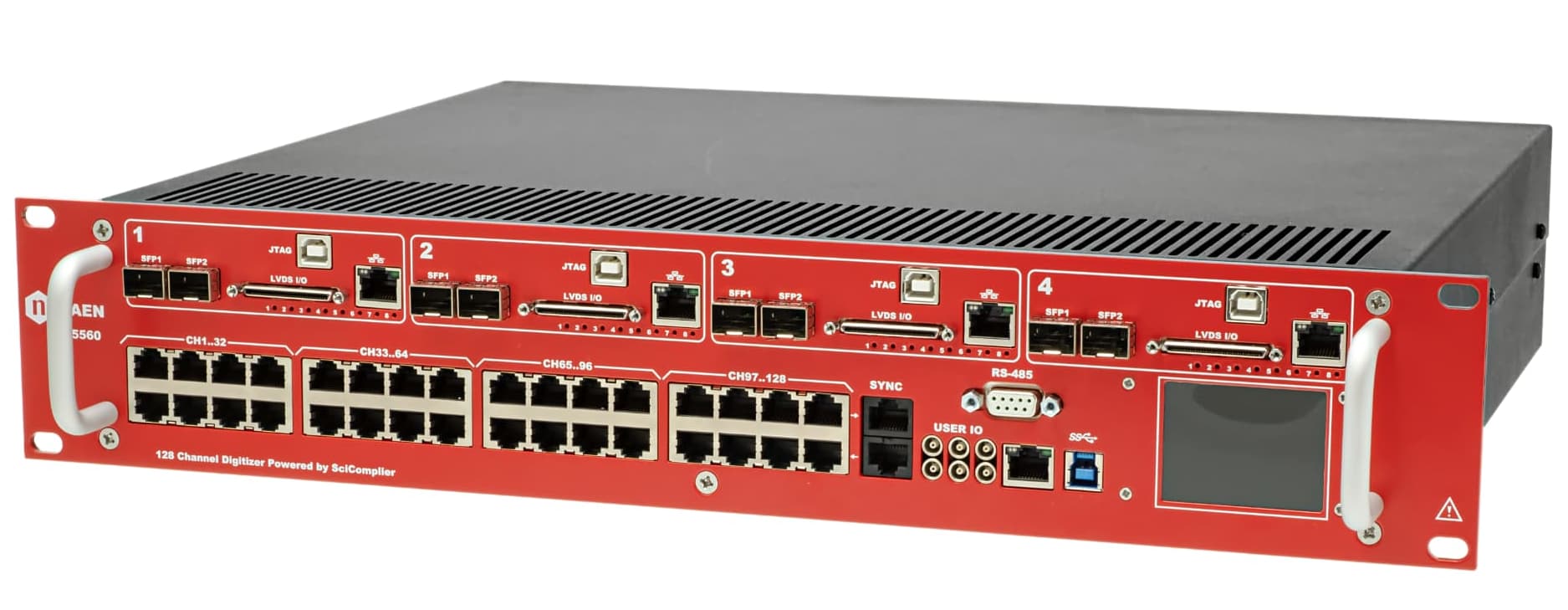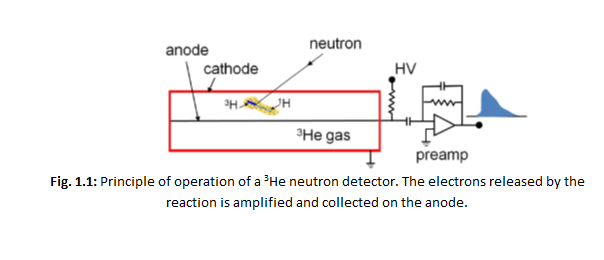R5560: A High Density Readout Solution for Position Sensitive Neutron Detectors
R5560: A High Density Readout Solution for Position Sensitive Neutron Detectors.
Detecting Neutrons: The detection of cold & thermal neutrons has been a primary technic to study several nuclear reactions for many decades, and it plays a key role in many research and practical applications such as Nuclear Reactors monitor, Homeland Security, Material Science and more. Because neutrons carry no electric charge they are quite a different beast when compared to other particles and Gamma/X radiation. This absence of charge means they do not interact directly with the electrons of the detector atoms.
Typical detectors rely upon a target material to convert the neutrons into a charged particle which ionizes the detector material, thus creating an electric signal. There are many types of target material, but Boron, Lithium, Gadolinium and Helium are the most commonly used. Among these materials Helium-3 and BF3 (or other Boron based) are most often selected because they are intrinsically ‘good’ at capturing neutrons (i.e they show a high cross section for slow neutrons) and because they are in gaseous form. As a result they can be both the target and the detector material. Here the main reactions involved:
The detector configurations most typically used are Gas Proportional Chambers: or “bottles” of pressurized gas in which the heavy charged particles which are released due to the reaction with the target ionize the gas, thus creating an electric pulse on the positively charged anode wire inside the detector.
Due to the shortage of Helium-3, many alternative detector materials, such as BF3 or other Boron Coated detectors, have been utilized. But the general principles can still be applied.
Applications: The detection of slow neutrons and data analysis does not return any information on the kinetic energy of the incoming neutrons, but only its presence. Certainly an energy spectrum can be acquired, but what is observed in the spectrum is primarily the energy deposited by the Heavy Charged Particles. However, detecting the presence of a neutron still conveys a lot of critical information: 1. Counting the neutrons will return a measure of the intensity of the source. 2. By spreading many detectors over an area we can measure the direction of the incoming neutrons. 3. Reading out a detector from both sides makes it possible to reconstruct the position of the neutron interaction through a technic called Charge Division.


